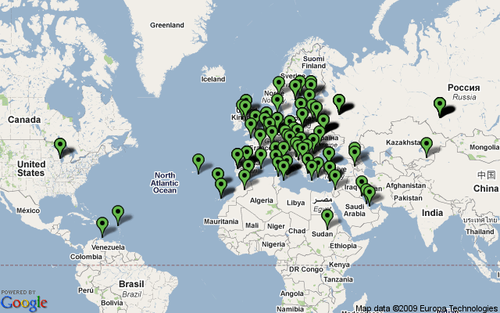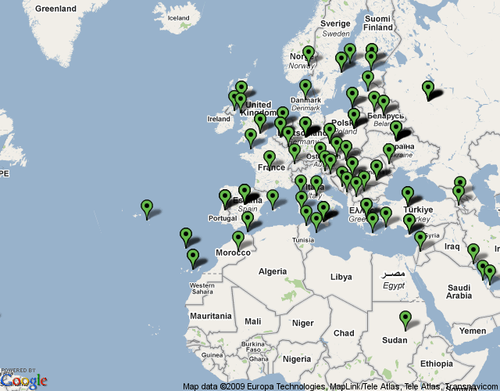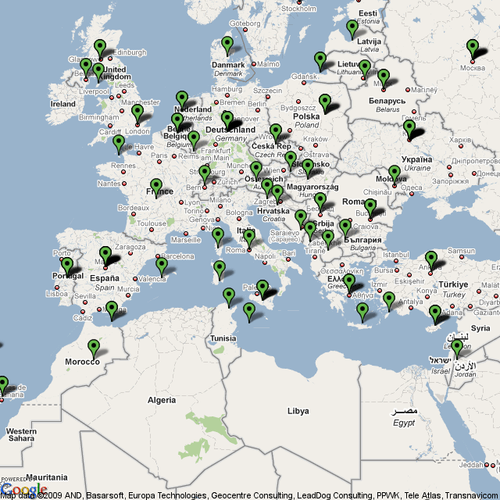It is Sunday afternoon and as I am witting this, the contest is not over yet, but I am officially QRT.The fact that it will be published on April’s 1st does not make it a joke!!!
It was the first time in my ham “career” I participated in this huge contest and it was exciting to say the least! I have been dreaming to do a WPX contest in QRP SSB for years, but knowing the size of it, I knew it would bring a lot of frustration, so I always put it off for “next year”. But this year was the year! I would do it: Single operator 20m QRP SSB.
My station is quite simple and not big-contest-capable. I have a single 20m dipole @15m high beaming to Central Europe, so this is a big disadvantage in a(ny) contest. I do not have another antenna and I am not 100% sure where the actual nulls of the dipole point.
I got prepared regarding the propagation and had studied the expected coverage and reliability of my setup in order to adjust my operating times in advance. I knew that when the band would be wide open, there would be chaos and my signal would be lost in the QRM. I needed the best fit between adequate propagation and low QRM so it was clear that most of the job should be done early in the morning…
On Friday afternoon I did a last check on my antenna and adjusted my power to 5W max using my scope and 2 different power meters just to be sure. I fired up one of my other HF rigs to check my transmission audio (with audio processor enabled) and I was quite ready. It is the right place to say that I used my TS-140S because Murphy stroke me. One of my TS-850S was hit by the “bad display unit capacitor” problem earlier this week and the display went off, my other TS-850S for a strange reason was extremely noisy on receive and my FT-890 ,which I wanted to use, was giving me a very bad and distorted modulation!What the heck!!!I decided to go with the TS-140!
I set my goals to realistic levels so that it would be clear when to stop and when to try a bit more. My goal settings were as follows:
– step 1: 20 QSOs or 100 points (whichever comes first)
– step 2: 50 QSOs or 500 points (whichever comes first)
I was determined to not quit unless the first goal is reached, no matter what, and I would fight for the second as long as there would be hope.
On day 1, I started really early at 05:00 UTC and checked the band up and down taking notes on the stations and their strength. There were some high points stations (7Z1’s, HZ1’s,A51,A60,A71) and a lot Eastern Europeans. They were not very strong but they were getting louder minute by minute. At first I tried the high points stations as I was afraid that I would lose them first. There was no luck with them, so I decided to follow the prescribed tactic: work the strongest stations first.
The first one , RU1A, came at 05:48 UTC at the first call ! I was more than excited!!! During the next 15 minutes I got two more stations , ES9C and OH5Z, again on the first call.What a great start! Then, the rate returned to the expected low which made me flirt with frustration most of the time. It required a looooooot of tries to break through the QRM which developed quite quickly. In average it took me 25 minutes of trying for a new QSO, and as the time passed by, it required much more effort and the time between QSO’s reached 50m at some points. What made it worse, was the fact that I underestimated the value of a voice keyer (again!) and it was a nightmare to repeat my callsign again and again and again..
After 2 hours I had 9 QSO’s in log and I was only one QSO away to complete my first goal. It felt like time had stopped! There was over an hour without success and I needed it in order to make a break. I cannot describe the feeling when the next station was logged.Happiness and relief at the same time.It felt like I won the lottery and I do not have to work again – ever! I took a small break to relax.My head was buzzing from the noise for minutes after I took off my headset.
When I came back, one hour later, the band was crazy! Absolute madness! I worked very hard to add 2 more QSO’s on the next 2 hours and then I took a long break (and a short nap) because I was feeling exhausted. In the afternoon, around 15:00 UTC, I realized what it means to be in a big contest! All the stations I had previously noted in my notepad where much more louder now.Maybe the conditions were better or they switched on their Kwatts. Most of them were peaking at S9+20db.Usually there were 3 or 4 stations within the receiver passband, all of them at S9+ , and copying was quite difficult.My TS-140 was suffering and so was my brain.Under these circumstances it is understandable why the other end could not copy my 5W signal, no matter how hard I tried. It was just impossible to get through.’This’ was the core of the contest and I was lucky that I started early in the morning because now there was no chance. For the next 3 hours my morale was going away and gradually reached the ground! Aside from an Italian station who grabbed my prefix, nothing else happened!
I was done for the first day. I decided to get some rest and prepared for day 2.
Conditions on day 2 seemed to me a bit worse (or I was tired enough!). Started a bit earlier at 03:50 UTC and found the same high points stations. Again, no luck with them, as they were now attracting a lot of stations, against whom I did not have any chance no matter how ‘perfectly’ I tried to time my calls.Nope!Nada! However, I was positive that I would grab some more and maybe I could reach goal #2. Unfortunately, the QRM peaked very fast and that made it the most frustrating period of the contest.All the stations that copied me, was getting some part of my call but not all of it.They were patient enough but at the end they were giving up. I fully understand them,though.My best luck was two Italian stations, on whom I insisted as they seemed to be the best catch, because they were at the end of the band (were it was really quiet) and they were geographically near me (which I hoped that would help).
After 6 hours I decided to QRT as I did not have any more energy to go on. In total, I managed to stay on air about 14 hours, made 14 QSO’s with a total (claimed) score of 224 points. I am very satisfied with the overall result.
“What’s the point?” someone may ask.”Why should you put your self into this torture?”…
Although I knew that using a modest station and QRP SSB would not get me very far, I wanted to put my operating skills under test and see where I stand. It was a personal challenge that could only have a positive result.I wanted to see how I can compete against others using all the operating tricks I know and maybe learn some more on the fly.I realized that someone needs to adapt very fast and develop new skills and tactics in order to survive, and a contest is the best place to learn this.There were times that I had to change phonetics to get through, or modify the accent depending on the DX station. This proves the most effective technique as for example the German stations were grabbing ‘Germany’ easier than ‘Golf’ and French stations liked better the sound of “zouliet” instead of “Juliet” or “Japan”. I paid attention in order to quickly understand the operating pattern of the other station, on which direction he hears and deduce whether he is using a beam or some other antenna so that I can come back later.
I always tried to put my self on the other operator’s shoes and imagine what he had to deal with. I slowly learned to adjust the speed and timing of my call in order to fill a possible momentary gap on the other side. This worked best most of the times, but the gaps were too short for the other side to copy my full callsign. Still, it was something I learned and used for the first time and I will master it in the future.
The most important thing this contest put under test was my discipline. I am proud that I did not have to think at all about operating procedures. I always transmitted my full callsign only, and transmit it only once. I never transmitted until I hear the other station calling ‘QRZ’ or ‘CQ CONTEST’. I never considered increasing the power even when I was completely frustrated and disappointed and I was always monitoring my output power not to exceed 5W.Playing by the rules is of the utmost importance.
The most exciting thing about contesting in QRP SSB is that it forces you to make the most of every little detail and take advantage of every opportunity.It keeps all your senses alerted and activates your survival instincts.It is like being an ant and try to walk along a running elephant herd and stay alive.
It was a great experience and I will definitely do it again!
73,Nick,SV1DJG



